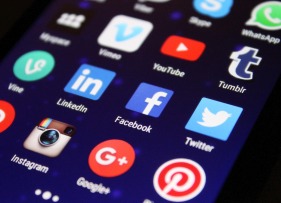 Travel can create unforgettable experiences and offer incredible opportunities that you may not get at home, or on campus. It allows you the freedom to explore a new place or culture and step outside of your normal structured daily experiences.
Travel can create unforgettable experiences and offer incredible opportunities that you may not get at home, or on campus. It allows you the freedom to explore a new place or culture and step outside of your normal structured daily experiences.
Travel isn’t only helpful as a reset; it can be beneficial for your mental health. If you’re feeling bogged down by the chaotic circumstances of every day life, travel can help you get out of your head and into a greater sense of wellbeing. This is especially valuable for those experiencing the stresses of student life.
If you’re looking for an exciting experience that will help you push the reset button, taking a trip could be the perfect way to truly unwind, unplug and get a much-needed health break.
Switching up your routine
If you’re stuck in repetitive mindset, or work on a set schedule it can create a depressive mindset through slowed cognition. By breaking the routine, you introduce your brain to the prospect of developing new ways of approaching your life, allowing you to process your world and surroundings in a healthier manner.
Is there any better way to shake up your routine than travelling? Going on a trip allows you to take a step back from the stress of classes, exams, and other projects while enveloping you in a broader, more interpersonal classroom that traditional institutions can’t always offer.
A time to reflect
A release from everyday stresses can leave room for better personal development. I’ve known many students who have said that a change of scenery, if only for a few days, can give them the much-needed quality time to evaluate their life’s direction and take stock of their goals.
I consider self-reflection to be a very healthy and beneficial aspect of any person’s mental health journey. A greater awareness of your needs, particularly when it comes to your mental health, is key for creating a positive, transformative mindset that can help you feel more equipped to tackle challenges. After you take the time to reassess your values in a different place, you’ll feel more capable of dealing with your student life back home.
Traveling on a budget
You may be thinking that you’d love to travel and “get away from it all” but you are on a tight budget. Luckily, there are a lot of options available for students who want to have the experience of taking their studies to a different country.
In one of our previous blogs, I talked about the various ways that you can get the most out of studying abroad. Talk to your Student Assistance Program, and you may find that you have several options available to take courses overseas. This is an excellent way of travelling on a budget, and gives you the advantage of having the best of both worlds.
Travelling doesn’t always need to be about the distance. Even if you can get to a cottage with friends for a weekend, you may find that the time spent away from the regular stresses of school will make you feel more relaxed and prepared to take on future challenges. With Airbnb and other less expensive vacation rental sites, you may find a destination cheaper than you thought!
For more information on how you can recharge and reset, contact your Student Assistance Program today.


 In the previous blog, I discussed how social media carries the potential to warp your self-perception. In this blog, I’ll address one of the additional dangers that social media platforms such as Instagram, Snapchat, and Facebook can pose to your mental health: addiction.
In the previous blog, I discussed how social media carries the potential to warp your self-perception. In this blog, I’ll address one of the additional dangers that social media platforms such as Instagram, Snapchat, and Facebook can pose to your mental health: addiction. Social media has been one of the world’s most amazing advancements in communication and social integration. In over
Social media has been one of the world’s most amazing advancements in communication and social integration. In over  The conversation surrounding gender identity in the workplace is becoming increasingly important. As International Human Rights Day approaches, I find myself thinking about the suicide rate amongst transgender individuals; over
The conversation surrounding gender identity in the workplace is becoming increasingly important. As International Human Rights Day approaches, I find myself thinking about the suicide rate amongst transgender individuals; over  With final projects and exams approaching, it’s important to find healthy ways to relieve stress. Research has shown that
With final projects and exams approaching, it’s important to find healthy ways to relieve stress. Research has shown that  Last time on our Getting the Most Out of Your Employee & Student Assistance Programs quarterly blog series, we discussed a few of Aspiria’s specialized solutions that breathe new life into work environments by benefitting employees and their families. However, we can’t forget that Aspiria has also provided SAP services to the college and university student market since 2011!
Last time on our Getting the Most Out of Your Employee & Student Assistance Programs quarterly blog series, we discussed a few of Aspiria’s specialized solutions that breathe new life into work environments by benefitting employees and their families. However, we can’t forget that Aspiria has also provided SAP services to the college and university student market since 2011! In light of
In light of  Now that summer is more than halfway over, have you noticed any of your staff longingly looking outside their windows, wishing they could have some time in the sun? When I think of sunshine, I think of warmth and the beach, but there is also a biological need for natural sunlight: vitamin D.
Now that summer is more than halfway over, have you noticed any of your staff longingly looking outside their windows, wishing they could have some time in the sun? When I think of sunshine, I think of warmth and the beach, but there is also a biological need for natural sunlight: vitamin D.